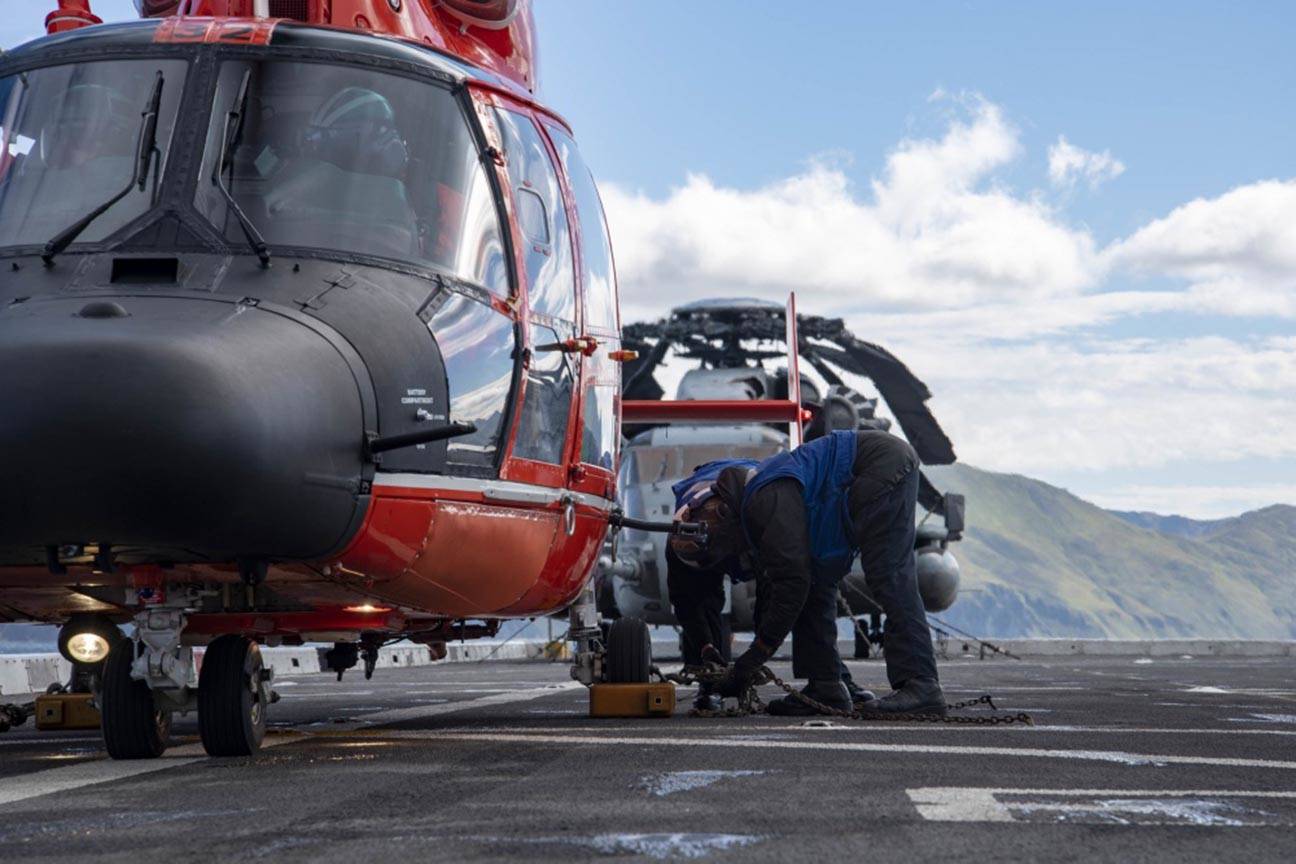Coast Guardsmen from Alaska’s District 17, as well as Marines and sailors from California, are taking part in the largest training exercise of its kind in years.
Approximately 3,000 Marines, sailors and Coast Guardsmen practiced amphibious operations in Adak and Seward, as well as throughout Alaska’s coastal waters.
“They’re relying heavily on the knowledge of the Coast Guard because we’ve been up here continuously for decades,” Capt. Kevin Riddle, the chief of response for USCG District 17, told the Empire.
A large part of the exercise was to practice operating in Alaska’s climate, rather than southern California, as they battled high winds, heavy seas and low temperatures. The purpose of the exercise was to see how the Navy and Marine Corps could improve their tactics, techniques and procedures to the unique difficulties of the Arctic climes.
“I don’t want to denigrate our activities in Southern California, but I live there and it’s pretty nice all the time,” said Rear Adm. Cedric Pringle, commander of Expeditionary Strike Group 3, and commander of the exercise. “I was on the beach on Adak and there was 45 knot winds coming across it. It was challenging holding a press conference, much less putting AAVs (Amphibious Assault Vehicles) and helicopters on the beach.”
The exercise has covered practicing missions the Marines, Navy and Coast Guard might be called on to carry out including disaster relief, amphibious landings, logistical support ashore, and air assault — staging a mock attack with helicopters and Marines on an old airfield at Adak.
During the Arctic Expeditionary Capability Exercise, the Coast Guard is operating an MH-65 helicopter and HC-130 cargo aircraft from Coast Guard Air Station Kodiak. The Navy has two amphibious landing ships, USS Somerset and USS Comstock, according to a press release. The Marines sent Special Purpose Marine Air Ground Task Force Alaska, drawn from the 1st Marine Expeditionary Force out of Camp Pendleton in California. Additionally, the USCGC Douglas Munro, homeported in Kodiak, is supporting the exercise.
Pringle pointed out the USCGC Douglas Munro is named for a Coast Guardsman who posthumously received the Medal of Honor evacuating Marines from Guadalcanal, the only Coast Guardsman to ever receive the award.
“This operation proves the Navy and the Coast Guard’s ability to operate together here, providing safety and security for the Arctic and all of Alaska,” Riddle said. “This is the largest scale exercise they’ve done up here in a while.”
The Coast Guard has had continuous operations due to the nature of its primary mission, Riddle said. The experience they’ve acquired can help the Navy as the fleet reorients its mission in the Arctic.
“The wind and seas here are challenging,” Pringle said. “It’s still part of America, but it’s part of America where we rarely send our ships.”
The Coast Guard has had a continuous presence here since 1867, when it was still known as the Revenue Cutter Service, according to Coast Guard Chief Petty Officer Matt Schofield.
“We have an outstanding working relationship,” said Riddle. “We’ve worked closely with them from the planning process through the execution, hence our helicopter embarked on their ship to support them.”
While Adak is an ice-free port year-round, Pringle said, if they intend to exercise any further north, it will require icebreaker support, which is organic only to the Coast Guard.
Pringle says he hopes the exercise will become a more permanent part of the rotation of major exercises for the military, perhaps scheduled every other year.
The exercise will continue for another week.
• Contact reporter Michael S. Lockett at 523-2271 or mlockett@juneauempire.com.

